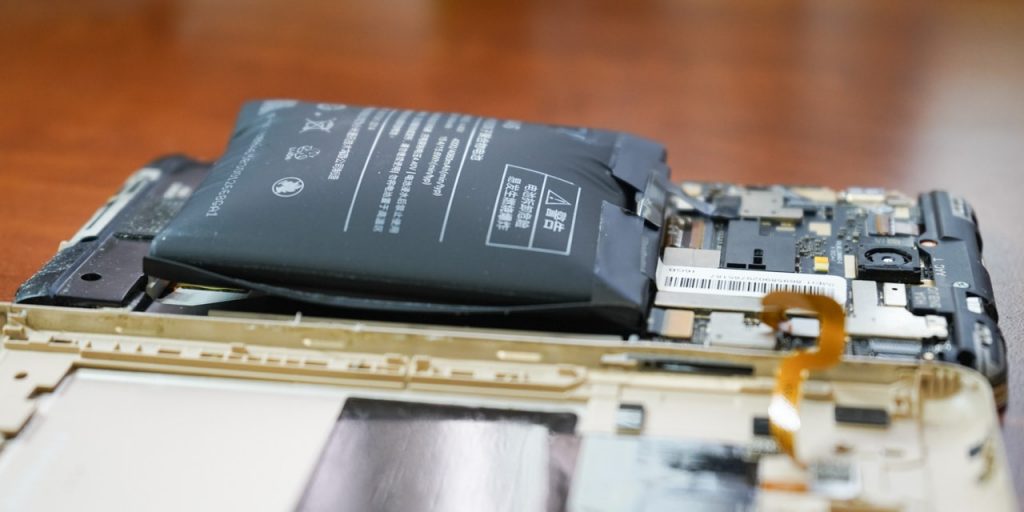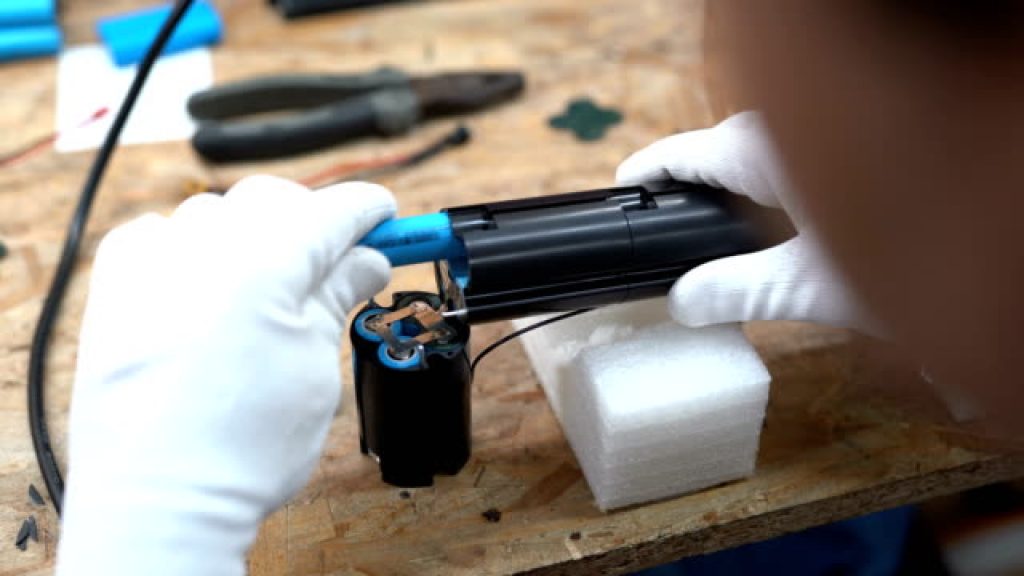Can You Overcharge a Lithium Battery? Truthfully, the answer to this question isn’t as simple as you might think.
The short answer -yes, you can overcharge a Lithium battery.
But it’s also worth mentioning that most modern Lithium-Ion Batteries have a built-in mechanism that protects the battery from overcharging. As soon as the battery reaches full charge, the mechanism kicks in.
So, that’s it? The question has been answered, right?
Not so fast.
We still need to address several battery overcharge-related variables. For example:
- What if the protection mechanism fails?
- What actually happens when you overcharge a battery?
- Is there anything you can do to prevent this from happening?
In this article, we’ll explore these topics thoroughly and provide a reassuring answer to the question of whether or not you can overcharge a Lithium battery.
Table of Contents
Can A Lithium Battery Be Overcharged?

Source: express.co.uk
Yes, overcharging a lithium battery can happen, and it can be quite dangerous.
What Is Battery Overcharging?
Overcharging in a battery is the continuous charging of a cell after it has reached full capacity.
To understand how this can occur, we’ll need to quickly refresh your memory on how a Lithium battery works.
In a rechargeable lithium-ion battery, the lithium exchange between two electrodes results in a flow of electrons through an outer circuit, thus providing electricity to the load.
When you charge a battery, you’re basically applying external energy to “push back” the electrons (through redox reactions). This forces them in the opposite direction in which they flowed from when the battery was discharging.
It’s easy to assume here that the more you charge a battery, the more electrons you “push back”.
In reality, we know this doesn’t happen because the amount of energy a battery can hold (also known as capacity) is limited by the amount of material that can provide and consume electrons.
So once a battery reaches its full storage capacity – i.e., when there are no more electrons to “push back” – the extra energy being applied can cause unwanted reactions in the battery cell.
This can cause irreversible damage to its components, shortening the battery life and posing serious safety risks.
To avoid this problem, manufacturers provide the batteries with an external protection mechanism that interrupts the charging process once the battery has reached its storage capacity.
We refer to this mechanism as a battery management system.
Battery Management System (BMS)
A BMS’s role is to monitor and regulate charging and discharging to ensure the optimal use of energy in batteries.
More sophisticated BMSs are capable of monitoring many properties of a battery. Namely, its voltage, temperature, state of charge, power consumption, charging cycles, and remaining operating times, among other properties.
When applied to multi-cell batteries, the BMS provides a cell balancing function, which ensures that different battery cells have the same charging and discharging requirements.
Although using a BMS provides safer and more reliable lithium batteries, you shouldn’t rely solely on them.
That’s because a lithium battery’s internal temperature can still increase considerably when you apply excessive energy to the battery, despite having a BMS.
There are a few measures you can take to avoid overcharging your lithium battery. This way, you can decrease the risk of damaging it and prolong its life.
We’ll discuss these measures later on.
What Happens If You Overcharge A Lithium Battery?

Source: clevercreations.org
Overcharging can damage a lithium-ion battery by creating unstable internal conditions, which lead to over-pressurization, followed by a steep rise in temperature and consequent thermal runaway.
In a “worst-case scenario”, these extreme conditions result in combustion or even explosion of the battery. And even though these are not everyday occurrences, chances are you’ve heard of at least one case of battery explosion in the last couple of years.
However, in less extreme cases, overcharging can simply harm the battery’s performance, including:
- Capacity decrease: irreversible loss (partial or complete) of a battery’s ability to store energy.
- Rise of impedance: reduction of the rate at which the battery can accept or release energy.
- Increased discharge rate.
- Low voltage.
- Excessive heat generation.
- An overall decrease in cell lifespan.
So What Exactly Leads To All This Damage?
Overcharging a lithium-ion battery can lead to chemical reactions inside a battery cell, which can cause degradation of its components (electrolyte, electrodes, and separator).
Example – Lithium Plating
Lithium plating is the unwanted deposit of metallic lithium on the surface of the anode, which causes batteries to malfunction or to stop working altogether.
Lithium plating can occur under the following conditions:
- When you charge a battery for longer than it should be;
- Or when you charge it with a higher voltage than recommended.
Check out this video to see what happens you overcharge a battery. Notice the prior removal of the protection circuit.
Can You Repair An Overcharged Lithium Battery?

Source: istockphoto.com
In theory, depending on the magnitude of the damage, it’s possible to repair a lithium battery.
A battery is a collection of individual parts (the cell itself, the casing, and the battery management system) – this should make it easy to repair, right?
In practice, that’s not entirely true.
Of course, it depends on the type of lithium battery and the problem it presents. Factors such as battery size, application, and diagnosis all play a role here.
Most lithium batteries in portable devices are manufactured so that, when opened, get destroyed and can’t be put back together. However, this is not always the case for battery packs composed of a group of cells in parallel.
If just one of these cells is damaged, it might be possible to replace it. Therefore, you can repair the battery pack and restore its performance. However, in most cases, the battery pack’s casing can render this operation very difficult.
As a rule of thumb, you should dispose of your battery if it presents one of the following warning signs:
- Swollen battery
- Excessive heating
- Discolored battery
- Unusual smell
You may find it difficult to determine whether or not you can repair a battery’s minor defects. In saying that, before you dispose of a lithium battery, see if it’s worth fixing.
Tips To Help You Repair A Lithium Battery
- If one or more cells in a battery pack are underperforming, replacing them might be an option. Measure each cell’s voltage and capacity by applying a charging current and a power load.
- Defective BMS are commonly responsible for lithium battery failures. Evaluate the BMS response to a charging current, and if it shows to be the source of the problem, try to replace it.
If you have experience fixing electrical or electronic devices, you can try to fix it yourself. Nowadays, finding battery components in specialized stores or online is relatively easy. (If you decide to repair it yourself, be sure to follow the safety rules and be highly cautious).
If not, you can always seek specialized help.
It’s important to point out that Lithium batteries naturally degrade over time, usually presenting a lifespan of around 3 to 4 years (8 years for EV batteries). So replacing them from time to time is inevitable
However, we can take a few measures to help prolong the battery life.
How To Correctly Charge A Lithium Battery?
Here are a few preventive measures you can take if you wish to avoid damaging your Lithium battery and potentially prolonging its life:
1) Don’t Expose The Battery To Extreme Temperatures
A lithium battery’s performance can be drastically affected by external temperature.
Prolonged exposure to high temperatures can diminish the battery’s ability to hold a charge by degrading its components.
Conversely, batteries drain much faster in cold temperatures once they use part of their energy to keep themselves warm enough to function. This is quite harmful to the battery.
Ideally, you should keep your battery between 41°F(5°C) and 86°F(30°C).
2) Avoid Complete Charge And Discharge
Unlike lead-acid batteries, modern lithium batteries don’t suffer from memory effects. This means you can recharge them before they completely discharge. In fact, it is better to do so.
That’s because deep discharge causes metal degradation, which irreversibly damages your battery.
Conversely, a high state of charge is also harmful, as it can cause unwanted irreversible chemical reactions in the battery.
Manufacturers recommend charging your lithium battery before it gets lower than 25% and only up to 85%. This is called a “partial discharge cycle,” which can drastically extend the battery life.
3) Use An Appropriate Charger
Using the right charger is crucial when charging a lithium battery.
You should check the voltage and amperage on your charger to ensure they meet the device’s requirements (usually, you’ll find the charger’s specifications somewhere in the power brick).
Voltage can be described as the “pressure” that pushes electricity through the battery. If you apply a charging voltage too high, you might end up shorting out your battery because you’ll overload the circuits.
Similarly, by applying a low charging voltage, the battery can charge erratically, decreasing its lifespan.
4) Store It Properly
If you ever need to store your lithium battery, do so in a dry space with good ventilation. Store your battery away from sunlight and maintain a relatively steady temperature.
Additionally, manufacturers usually recommend storing lithium batteries with a charge of around 50%.
That’s because a battery can fall into a “deep discharge state” if stored fully discharged. Conversely, if stored fully charged, a battery may lose some capacity, resulting in shorter battery life.
5) Avoid Fast Charging
For these fast-charging devices to charge a battery faster, manufacturers either boost the amperage or vary the voltage to increase the amount of potential energy.
Both options can generate stress in the battery chemistry, so you should keep away from these devices if you want to avoid potentially damaging your battery.
Final thoughts
Although the development of safer lithium-ion battery cells has been successful with the integration of a BMS, thermal runaway may still occur under extreme conditions.
There are specific preventive measures you can take to avoid safety risks and potentially prolong your lithium battery life.
So it might be worth reconsidering leaving your smartphone or laptop charging overnight. You know, better be safe than sorry.

